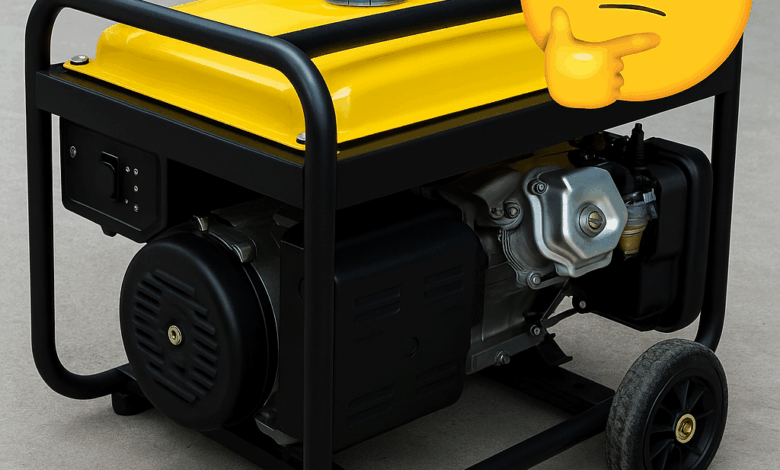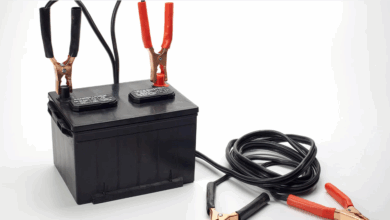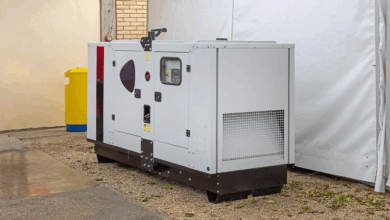10 Common Reasons Your Generator Won’t Start (And How to Fix Them Yourself)

A generator not starting when you need it most can be incredibly frustrating. Whether it’s an emergency power outage, a camping trip, or an outdoor tailgate party, a non-functional generator can quickly throw a wrench into your plans.
Luckily, in many cases, the issue can be resolved without calling a professional. In this article, I’ll walk you through 10 of the most common reasons why a generator won’t start—and how you can troubleshoot and fix the issue yourself.
Why Generators Are More Essential Than Ever
The demand for generators has grown significantly in recent years. With natural disasters like hurricanes, wildfires, floods, extreme heat, and freezing temperatures becoming more frequent, more people are relying on generators for backup power. Usage has risen from 3% to 5% since 2013—and it’s not just for emergencies anymore. Many people, like myself, use generators for RVs, outdoor events, camping, and remote job sites.
But owning a generator is one thing—keeping it running smoothly is another. Let’s go over the most common reasons your generator might not start, and what to do about each one.
1. Low Engine Oil
Solution: Check and Refill Oil
Most modern inverter generators come equipped with a low-oil shutoff feature that prevents the engine from running on insufficient lubrication. If oil levels drop too low, the generator will automatically shut down or refuse to start.
✅ Tip: Use a dipstick to check oil levels—especially if your generator doesn’t have an automatic shutoff. For new generators, change the oil after the first 20 hours of use. For older units, change it every 40–50 hours.
Also, inspect for any leaks. Prolonged low-oil operation can cause internal friction and drastically reduce engine life.
2. Old or Insufficient Fuel
Solution: Refill or Replace Fuel and Level the Generator
Before starting, check that your fuel tank is full and the fuel valve is open. If you’re using propane, ensure all valves and hoses are securely connected.
Placing the generator on an uneven surface can also cause fuel flow problems. Always operate the generator on a flat, stable surface.
⚠️ Warning: Stale gasoline left in the tank too long can degrade and clog the system. Always use fresh fuel.
3. Dead Battery
Solution: Recharge or Use Manual Start
If your generator features a remote or push-button start, a dead battery might be the issue. Use a trickle charger to maintain battery life or start the generator manually with the recoil system to recharge the battery naturally.
🔋 Pro Tip: Even with electric start models, it’s good practice to occasionally start the generator manually.
4. Choke in the Wrong Position
Solution: Adjust Based on Engine Temperature
The choke controls airflow into the carburetor. If it’s in the wrong position, especially during a cold start, the generator might struggle to start or vibrate abnormally.
- For cold engines: Keep the choke fully closed.
- For warm engines: Set the choke to half or fully open, depending on the situation.
Many newer generators have automatic chokes, which reduce manual adjustment.
5. Clogged or Dirty Air Filter
Solution: Clean or Replace the Air Filter
A dirty air filter can restrict airflow, preventing proper combustion in the carburetor. I’ve experienced this firsthand while camping—once we cleaned out a dusty, clogged filter, the generator roared back to life.
🧼 Maintenance Tip: Clean your air filter regularly. Replace it every 6 months if you use the generator often, even if it appears clean.
6. Cords or Appliances Plugged into Outlets
Solution: Unplug All Devices Before Starting
Never start your generator with cords or appliances plugged into the outlets. The startup surge can damage sensitive electronics and interfere with startup.
Let the generator stabilize for 10–15 seconds before plugging anything in.
7. Faulty or Dirty Spark Plug
Solution: Inspect, Clean, or Replace
A worn or dirty spark plug is one of the most common culprits behind generator startup problems.
- Use a spark plug wrench to remove it.
- Look for black deposits or corrosion.
- Clean with a wire brush and carb cleaner, or replace it if necessary.
To test it, hold the plug near the engine’s metal housing and pull the recoil cord. If you see a strong blue spark, it’s working. Weak or no spark? Time for a replacement.
8. Clogged Carburetor
Solution: Clean the Carburetor
If you leave fuel in your generator for extended periods without stabilizing it, it can gum up the carburetor.
Here’s how to clean it:
- Shut off the fuel valve.
- Remove the carburetor bowl.
- Use a needle to clean the main jet (a small brass nozzle).
- Clean all parts with a carburetor cleaner and a cloth.
After reassembly, turn the fuel valve back on and try starting again.
9. Blocked or Closed Fuel Valve
Solution: Check Flow and Clean If Necessary
The fuel valve controls the flow of fuel to the carburetor. Make sure it’s fully open. If it is, and fuel still isn’t reaching the carburetor, the valve or connected hose may be clogged.
10. Malfunctioning Low-Oil Sensor
Solution: Disconnect and Test
If your generator has a low-oil sensor and it’s malfunctioning, it may prevent the generator from starting even when oil levels are fine.
To troubleshoot:
- Unplug the wire connected to the sensor from the crankcase.
- Try starting the generator.
- If it starts, the sensor is faulty.
Reconnecting the wire may fix the issue temporarily, but consider replacing the sensor or wire for long-term reliability.
If your generator won’t start, don’t panic. Many common issues can be diagnosed and resolved with a few basic tools and a little patience.
To summarize, the top three culprits are often:
- A dirty spark plug
- A clogged air filter
- A gummed-up carburetor
Check those first, then move down the list. With routine maintenance and a little know-how, you can keep your generator running smoothly for years to come.




![How to Bypass CO Sensor on Generator – [4-Step Safety Guide]](https://www.generator411.com/wp-content/uploads/2025/08/co-sensor-on-generator-390x220.png)